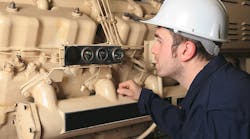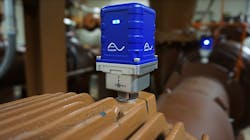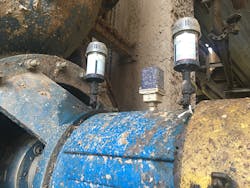When it comes to machine health, there are numerous products to choose from that promise to ensure the predictability and reliability of equipment. It's all with good reason too: machine health can be one of the largest factors for keeping up with production. However, even with all of the machine health products and software, there's a possibility you're not acquiring all of the pertinent data if you're not running continuous diagnostics on all equipment.
We spoke with Jon Biagiotti, Product Marketing Manager at Augury, to see what exactly this blind spot is in predictive maintenance and how continuous diagnostics makes a difference.
Q: How would you characterize the current state of predictive maintenance?
A: Rapidly evolving. A transition is occurring from viewing predictive maintenance and vibration analysis as siloed tasks to the bigger picture of machine health as an enabler of manufacturing digitization and an indicator of company health overall. Poor machine health can negatively impact all aspects of organizations that are dependent on industrial equipment, from the quality of their products and brand image to their ability to deliver goods on time to customers.
At Augury, we are addressing the blind spot of digital machine health through continuous diagnostics. Our full-stack digital machine health solution monitors critical assets by combining vibration, temperature, and magnetic data with advanced artificial intelligence. This mechanical data is gathered using IoT-enabled wireless sensors. Proprietary machine learning algorithms then compare these unique machine signals to thousands of similar recordings.
Based on this analysis, the technology can tell stakeholders what’s wrong with their equipment, possible causes, and how to fix them. It’s extremely actionable.
Q: What do you see as the biggest benefits of applying data analytics to Digital Machine Health?
A: There are numerous benefits to this. The avoidance of unexpected machine failure increases uptime, maximizes OEE (Overall Equipment Effectiveness), and reduces repair costs, as faults can be caught earlier and fixed at lower costs. However, there are also less obvious benefits. With complete visibility into digital machine health, companies gain increased predictability and the ability to more accurately forecast output, while becoming more agile. For instance, optimized digital machine health allows companies to reduce the amount of inventory kept in warehouses or from having to rush order costly spare parts.
Most of our customers are part of the Fortune 500, spanning the consumer-packaged goods (CPG), the bottling industry, engineering wood products, automotive parts, plastic resins, and pharmaceutical manufacturing industries.
Q: Do you have any customer examples you can share?
A: Sure, one example that comes to mind is our work with one of the top 10 beer bottlers in the world. They were focused on minimizing downtime occurrences. Soon after the deployment of our continuous diagnostics, the algorithms identified a bearing that was wearing out on a filler's main drive. The motor had problems in the past but wasn’t easily accessible. It was also only scheduled to be checked once every few months.
With the advance notice, the bottler timed the repair with planned downtime. During the repair, it was estimated that the bearing may have only lasted one more week before failing, which would have led to a minimum three-hour shutdown for repairs. This would have translated into 180,000 bottles of lost production, a $360,000 loss of value at retail.












